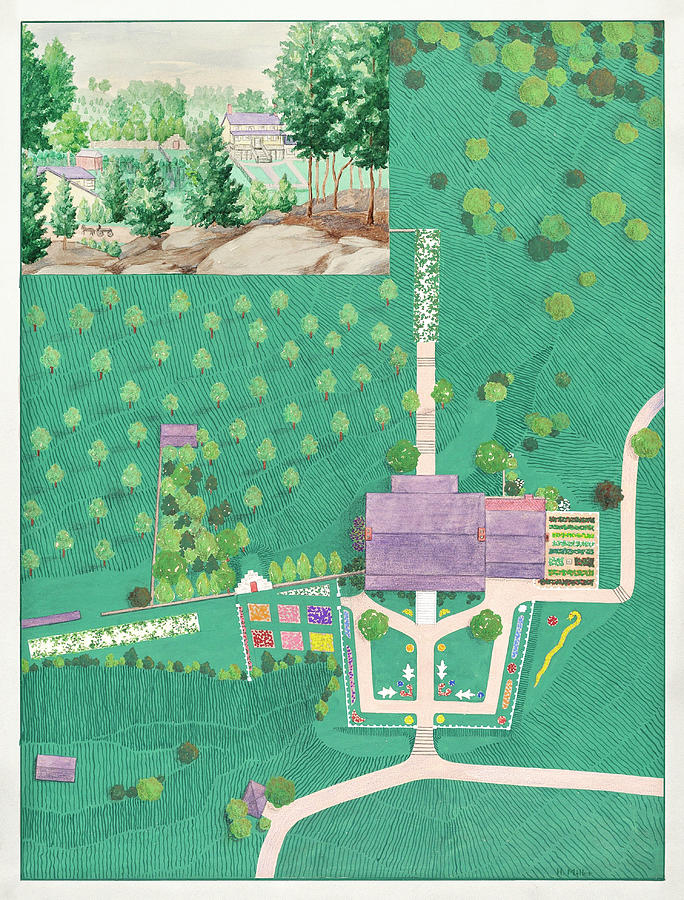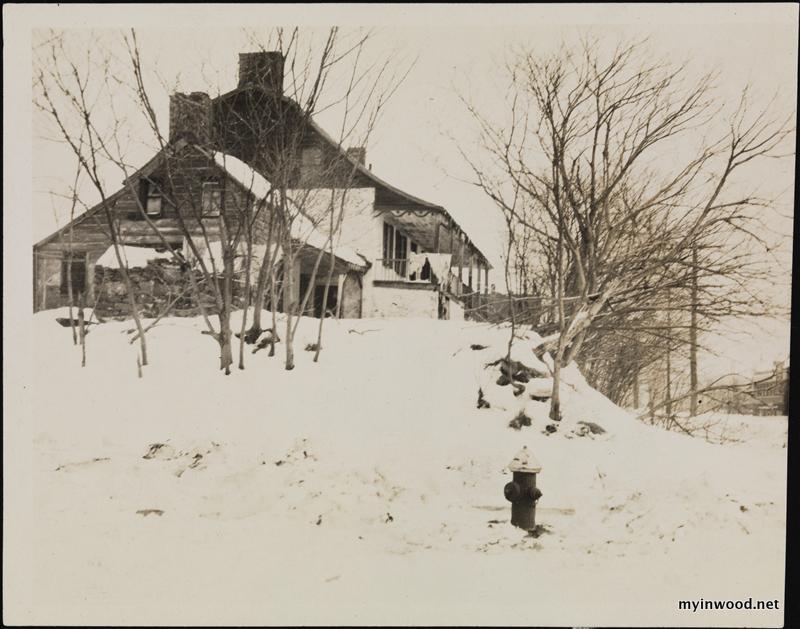Table Of Content
- How The Dyckman Farmhouse Has Stood For 235 Years While New York City Grew Up Around It
- NEW —Wild South Africa
- Designing Immersive Gatherings With Zach Morris of Third Rail Projects
- Nearby Harlem & Upper Manhattan attractions
- Dyckman Farmhouse Museum
- Historic house in Manhattan, New York / From Wikipedia, the free encyclopedia

So, the settlers brought even more African slaves to work on the settlement. As with many of Wright's residences, Hollyhock House has an "introverted" exterior with windows that seem hidden from the outside, and is not easy to decode from the outside. The house is arranged around a central courtyard with one side open to form a kind of theatrical stage (never used as such), and a complex system of split levels, steps and roof terraces around that courtyard.
How The Dyckman Farmhouse Has Stood For 235 Years While New York City Grew Up Around It
As such, the area became an attractive trade territory for European settlers who arrived in North America in the 17th century. Before the European colonization of North America, the area we know as New York was inhabited by the Indigenous Lenape people. They inhabited Lenapehoking, a vast territory that stretched between modern-day New York City, Philadelphia, New Jersey, eastern Pennsylvania, and part of the state of Delaware.
NEW —Wild South Africa
The cantilevered concrete also did not stand up well to the area's earthquakes. “Black baseball and the history of New York City are both charged with a type of deep layering that asks us to dig below the surface of what we see in the present,” says Phillips. In the exhibition, artist Gwendolyn Black has created life-size figures, which represent some of the farm’s former inhabitants. One represents Hannah, the cook, who stands in the family kitchen as a way to celebrate the legacy and roots of African American cuisine.
Designing Immersive Gatherings With Zach Morris of Third Rail Projects

The Dyckman Farmhouse Museum Alliance and staff, with assistance from neighborhood volunteers, manage the house and gardens. The Cannon House meets the housing gap in the City of Los Angeles by providing Transitional Reentry Housing. Our approach has been to provide special needs for individuals with tools necessary to re-enter the mainstream of society as members of our communities. The philosophy behind the Cannon House reentry is based on responsible behavior, a clean break from the past, and fellowshipping in a caring family like community. The Cannon House provides the residents with comfortable surroundings, an opportunity to let go of old negative patterns of behaviors and adopt new ones. When people think of buildings in Manhattan, chances are they think big and brash, cloud-piercing skyscrapers for tourists to marvel at.
Dyckman Farmhouse Museum opens new art exhibit exploring untold history of NYC's Black communities - 6Sqft
Dyckman Farmhouse Museum opens new art exhibit exploring untold history of NYC's Black communities.
Posted: Mon, 19 Oct 2020 17:08:40 GMT [source]
Dyckman Farmhouse MuseumThe Dyckman Farmhouse is the oldest colonial farmhouse to still exist in New York City. Because of the rocky terrain in Northern Manhattan, only certain areas would have been be appropriate for crops such as corn, cucumbers, cabbage and hay. Other areas were ideally suited for fruit orchards with cherry and apple trees. The inclusion of a cider mill within the farmyard indicates that there were enough apple trees to make that a cider mill was worthwhile. We do not yet know if or to what extent the Dyckmans brought produce to market.
Life Without Light: Creatures in the Dark With Sarah McAnulty
On a recent weekday morning, I took the I.R.T. to Inwood in northern Manhattan, where from 1915 to 1938 the ballpark Dyckman Oval was a frequent backdrop for Black baseball players barred from the Major Leagues. My train arrived at the Dyckman Street elevated station and I descended to the street. Encountering few other pedestrians, I walked uptown along broad, windswept Nagle Avenue.

Nearby Harlem & Upper Manhattan attractions
Dyckman After Dark Manhattan Borough President - Gale Brewer
Dyckman After Dark Manhattan Borough President.
Posted: Tue, 26 Sep 2023 01:52:30 GMT [source]
Water is meant to flow from a pool in the courtyard through a tunnel to this inside moat, and out again to a fountain. At No. 44 Stuyvesant stands a stately Federal-style house built for Nicholas William Stuyvesant, descendant of New Netherland’s first governor Peter (or Pieter) Stuyvesant. It doesn’t jump out from the surrounding buildings but those in the know will spot the building’s age and import. Grandstands sit where third basemen and shortstops once fielded grounders.
Dyckman Farmhouse Museum
Dyckman Farmhouse MuseumThe first farmhouse was built by Jan Dyckman who arrived in New Amsterdam in 1661. Manhattan’s last Dutch colonial farmhouse has overlooked bustling Broadway for more than 200 years. Today, it reflects the diverse and energetic populations that call Inwood home. It is believed that the second floor was one open space up until the 1820s when it was divided into the separate bedrooms still present today. Our menu features 28 days of wet-aged USDA Prime steaks cooked in a 1,500-degree broiler served sizzling hot with clarified butter on plates heated to 450 degrees. At Mastro's we have an array of the freshest seafood selections, like our 2-foot-tall seafood tower of chilled crab legs, shrimp and oysters served over a cloud of dry-ice.
Historic house in Manhattan, New York / From Wikipedia, the free encyclopedia
I soon reached where Academy Street hits the avenue; Academy used to cross the area, creating a natural placement for Dyckman Oval’s home plate and a parallel for the first base line. It was easy to envision a baseball park in that space, the third base line bordering Nagle with the El looming overhead, 204th Street out beyond left field and Amsterdam Avenue past right. But the borough is also home to the far more modest Dyckman Farmhouse, a white clapboard home built in 1765. It’s the oldest farmhouse in the city, and just off 204th Street in Inwood, once home to the Dutch farmer William Dyckman, his family and their slaves. Shortly after the still standing Dyckman Farmhouse was built, there were seven to eight enslaved people living there. We depend on ad revenue to craft and curate stories about the world’s hidden wonders.
When Jacobus’ last son, Isaac, died in 1868, he left a will which clearly dictated how the family land was to be divided. If James Frederick Smith, the young grandson of Jacobus who moved into the farmhouse in the early 19th century, agreed to change his name to Isaac Michael Dyckman then he would inherit money and specific plots of land. The rest of the property, which added up to about 340 acres and included the Dyckman farmhouse, Isaac stipulated should be sold with the proceeds going to various Dyckman family members. The only enslaved person that we know of by full name in Dyckman family history, Francis Cudjoe was manumitted in 1809 by Jacobus Dyckman. He lived and worked on the farm roughly a decade prior to Hannah, but their time at the farmhouse may have overlapped. Investigates the stories of enslaved people who live and worked on Dutch farms in what is now called Inwood.
The sisters sought to preserve and exhibit not just a family relic but an entire way of life. They filled the rooms with objects that evoked their vision of New York’s Dutch heritage. In the garden, a fieldstone smokehouse was added and a half-timbered wood hut—originally built in the area by Hessian mercenaries during the Revolutionary War—was reconstructed. When the restoration was completed in 1916, the house and grounds were donated to the City of New York as a museum of early American life. Today, education programs continue the sisters’ goal of preserving the past for future generations.
Northerners had their own system for integrating enslaved people into the economy and had their own ways of isolating them from all forms of social and economic mobility. He built a two-story house using fieldstone, brick, and wood which he painted white, and added porches on both sides of the residence. On its top, the house is sheltered by a gambrel roof, a nod to its Dutch colonial roots. By the time of the American Revolution, the Dyckman Farmhouse had been inherited by Jan's grandson, William. And when the British forces invaded Manhattan, William Dyckman took his family to seek refuge upstate. The undeveloped land in New York was prime for farming, and the Lenape people had long successfully grown crops and other produce on the island.

No comments:
Post a Comment